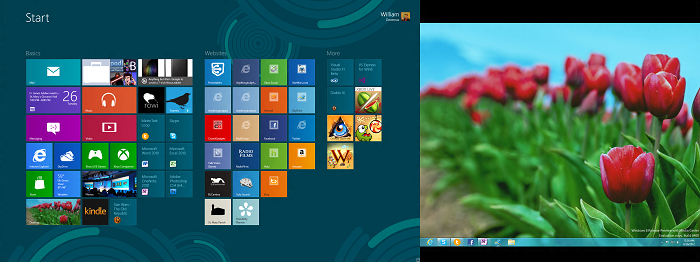Windows 8’s multi-monitor support: one step forward, two steps back

With Windows 8, Microsoft has made a great number of improvements – much needed ones, at that – to the operating system’s multi-monitor support. Desktop backgrounds can now be stretched across monitors or displayed differently on each screen, the taskbar can be shown on many screens with a multitude of options, and much more. With the Windows 8 Release Preview, Microsoft even added small 6px corners to prevent your mouse from overshooting the corners. In short, the multi-monitor experience has never been better. Unfortunately, these great improvements won’t help you most of the time.
With Windows 8, you’ll probably spend most of your time with the new Metro-style user interface (UI). Sure, many applications will still require the use of the desktop, but most tasks can be accomplished using the new apps. And this, sadly, is where Windows 8’s multi-monitor support takes two steps back. When using more than one monitor, the Metro-style UI is only displayed on a single screen. It’s very easy to swap back and forth between screens, but you can still only use one at a time (pictured above). This isn’t too bad, although it would certainly be nice if you could have two or more instances of the Metro-style UI running simultaneously.
The real issue here is that notifications and other important information will only appear on your primary display, regardless of which screen is currently showing the Metro UI. As a result, it is extremely easy to miss important alerts. Notifications are crucial on Windows 8. Traditionally, application notifications were signified by a flashing icon in the taskbar or a pop-up in the corner of the screen. This still is true on the desktop side, but the new notification system or the Start screen must be used on the Metro-style side. The Start screen is the “permanent home” for any notifications that might appear, but if you’re running an app and happen to miss an alert – like a new IM – because it’s on the other screen, it could easily be hours before you discover the update.
Granted, this might only be a problem in my particular use case, but I think that notifications should always be shown on whichever screen has the Metro-style UI, not the default display. This has annoyed me so much that I’ve had to make some significant changes to the way I use my PC’s two screens. Check out my follow-up post to find out how I temporarily solved this problem, as well as the drawbacks associated with said workaround.


